| Sporty/performance car; Built in Japan |
|
|
| Good condition price range: $1,600 – $4,400* |
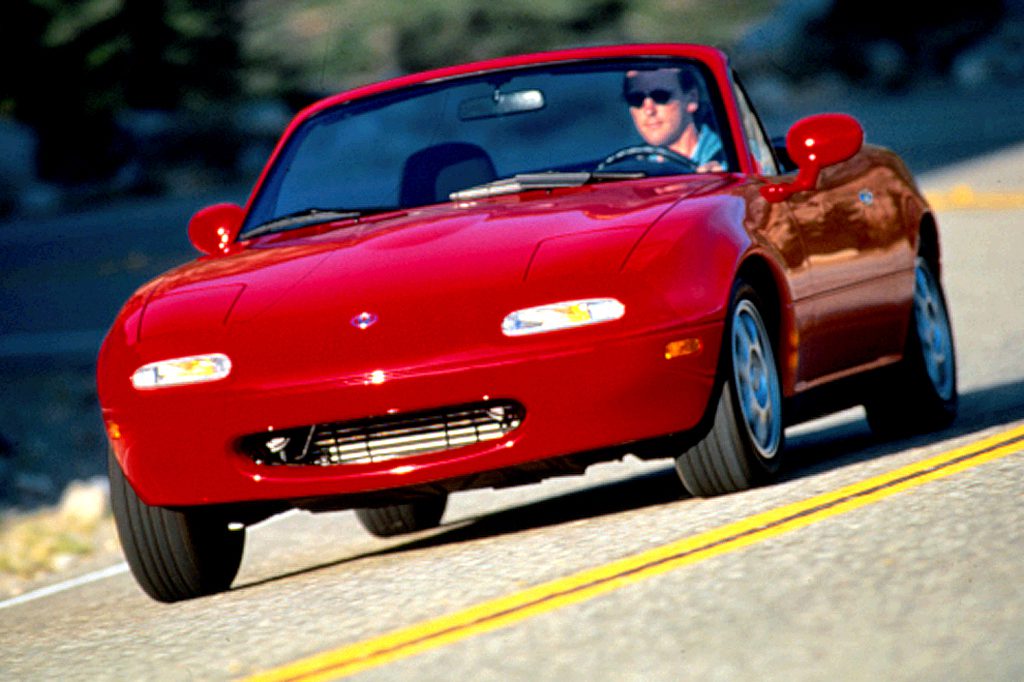
1996 Mazda Miata MX-5
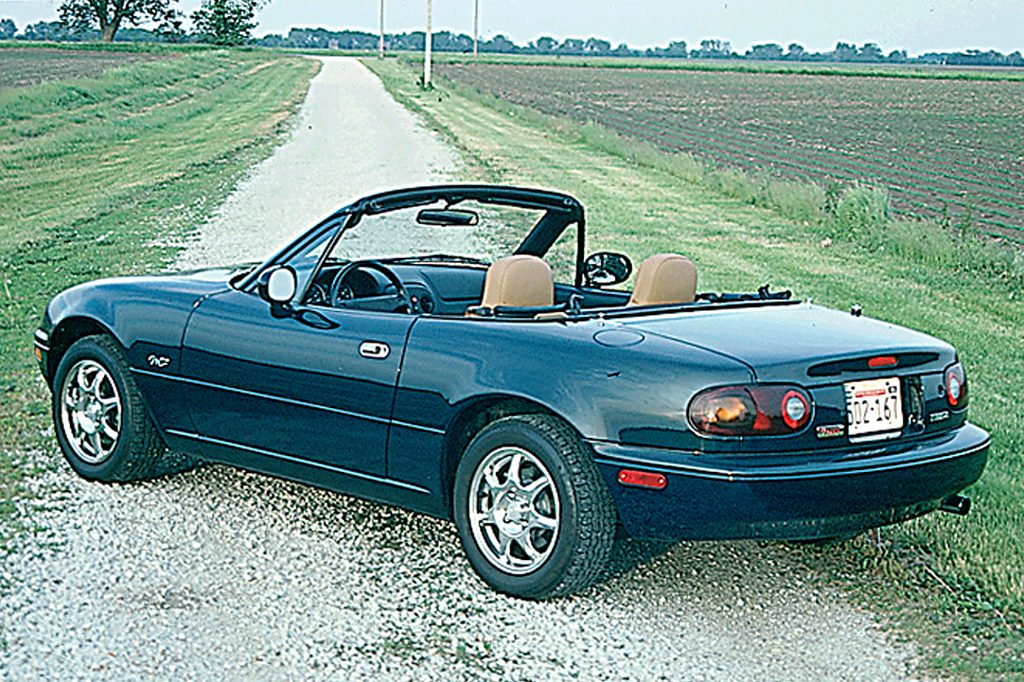
1994 Mazda Miata MX-5
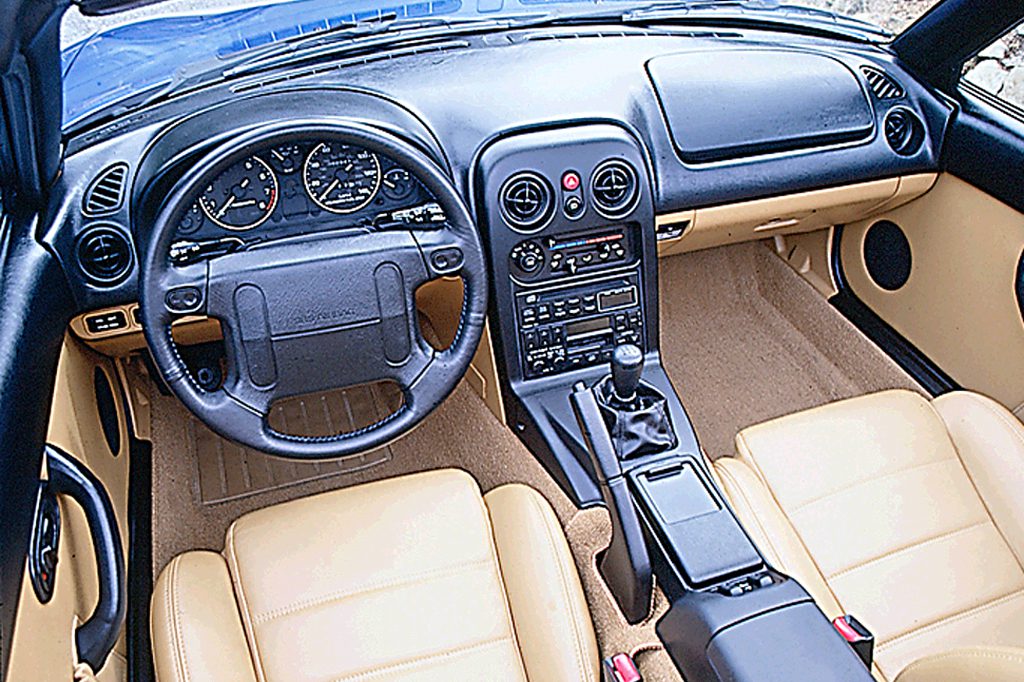
1994 Mazda Miata MX-5 interior
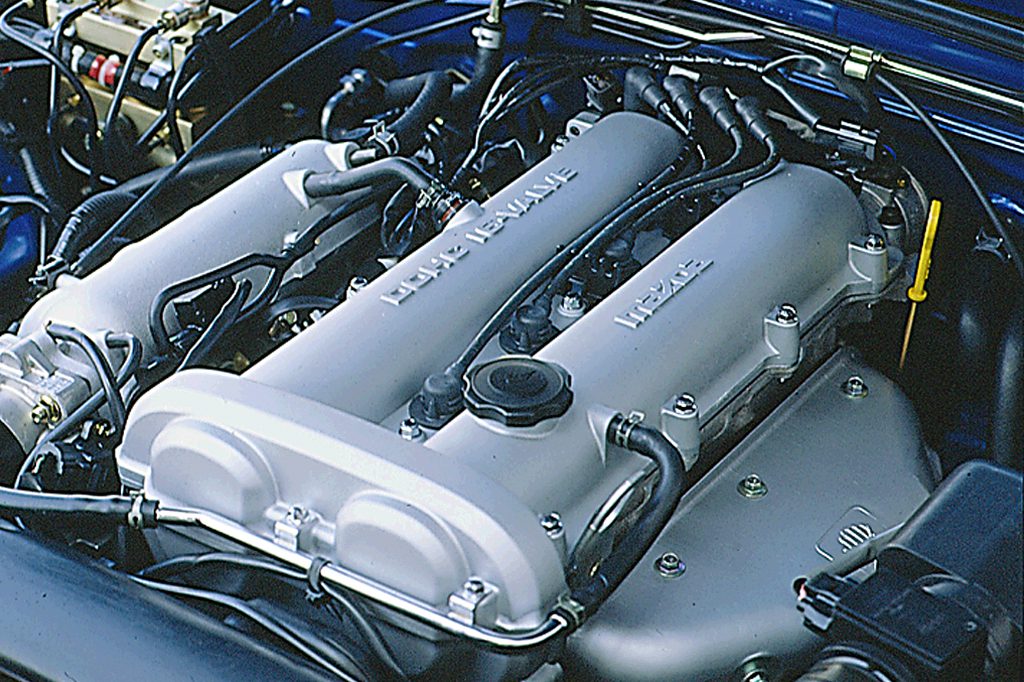
1995 Mazda Miata MX-5 engine
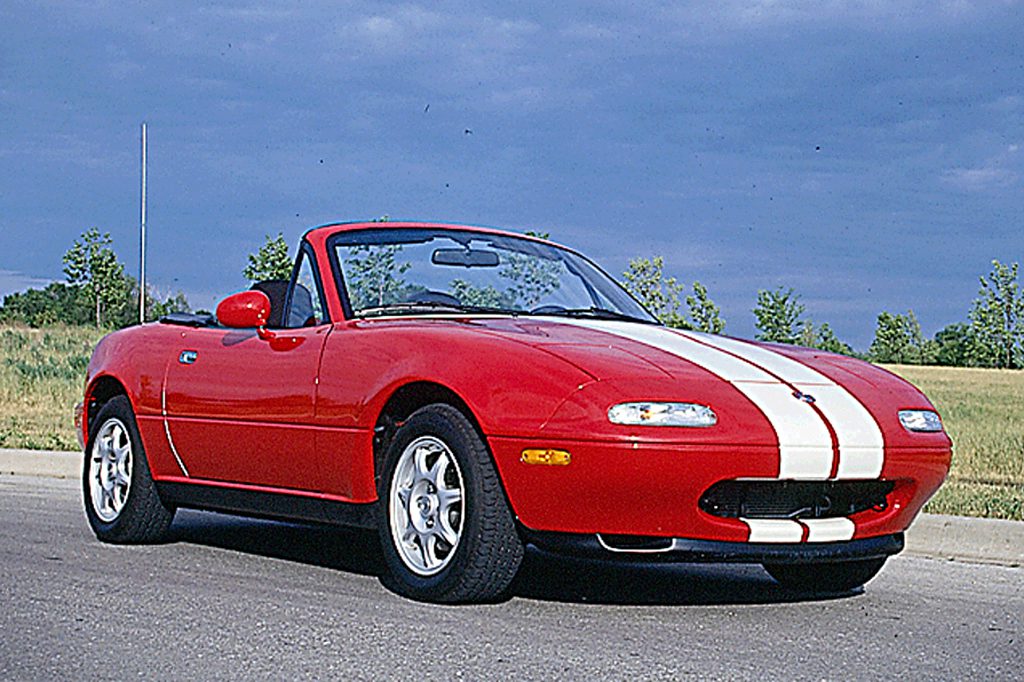
1994 Mazda Miata MX-5 R-Edition
| Pros: |
|
| Cons: |
|
The first-generation Miata still looks and feels as good as it did when it arrived in 1989. If you’re looking for an affordable, fun-to-drive sports car, there’s little need to search further.
Overview
The Miata performed an overnight resurrection in 1990 on what had previously been a virtually dead market–that of the affordable 2-seat roadster. Initial models arrived in one of three colors–red, white, or blue–with a powertrain consisting of a 116-horsepower, dual-cam 1.6-liter 4-cylinder and a 5-speed manual transmission. Late in the 1990 model year, a 4-speed automatic was added, which dropped the horsepower rating from 116 to 105. All models could be ordered with a removable hardtop. Standard first-year features included a driver-side airbag and a manual folding top.
Yearly Updates
| 1991 Miata The most important change for 1991 was the availability of optional antilock brakes. ABS was offered as a stand-alone option and not part of any package. |
| 1992 Miata For 1992, mechanical and appearance changes were limited to a few convenience items. |
| 1993 Miata Minor trim and equipment revisions mark the fourth edition of the popular 2-seat convertible sports car. |
| 1994 Miata A larger engine, a passenger-side airbag, and some structural stiffening mark the first major changes to Mazda’s popular roadster since the Miata made its debut in 1990. The 1.6-liter engine gives way to a 1.8-liter unit. While the standard 4-wheel disc brakes have been enlarged, antilock brakes remain optional. Structural stiffening consists of new braces placed in the front and rear suspensions, as well as between the shoulder-belt anchors. Other changes include a new 12.7-gallon fuel tank in place of the 11.9-gallon unit and a new 7-spoke design for the optional alloy wheels. Arriving in the spring were two new versions of the Miata. The M-edition features both leather seating surfaces and wood trim on interior panels. Select the extra-cost R-edition and you find such performance upgrades as a sport-tuned suspension, limited-slip differential, alloy wheels, front/rear spoilers, and an “aero” rear skirt. |
| 1995 Miata The 1995 Miata returns with only minor changes. |
| 1996 Miata Like many cars, Mazda made changes inside both doors in order to meet 1997 federal standard for side-impact protection a year early. Along with structural changes to the doors, there’s a redesigned interior door panel with map pockets as an added feature. Underneath the hood, Mazda tinkered with the 1.8-liter engine to lower emissions, and in the process managed to squeeze out some extra horsepower and torque. |
| 1997 Miata The popular Miata convertible shuffles a few optional features, but is otherwise unchanged. |
| 1998 Miata The original Miata made a short run in anticipation of the spring 1998 arrival of a new model. |
